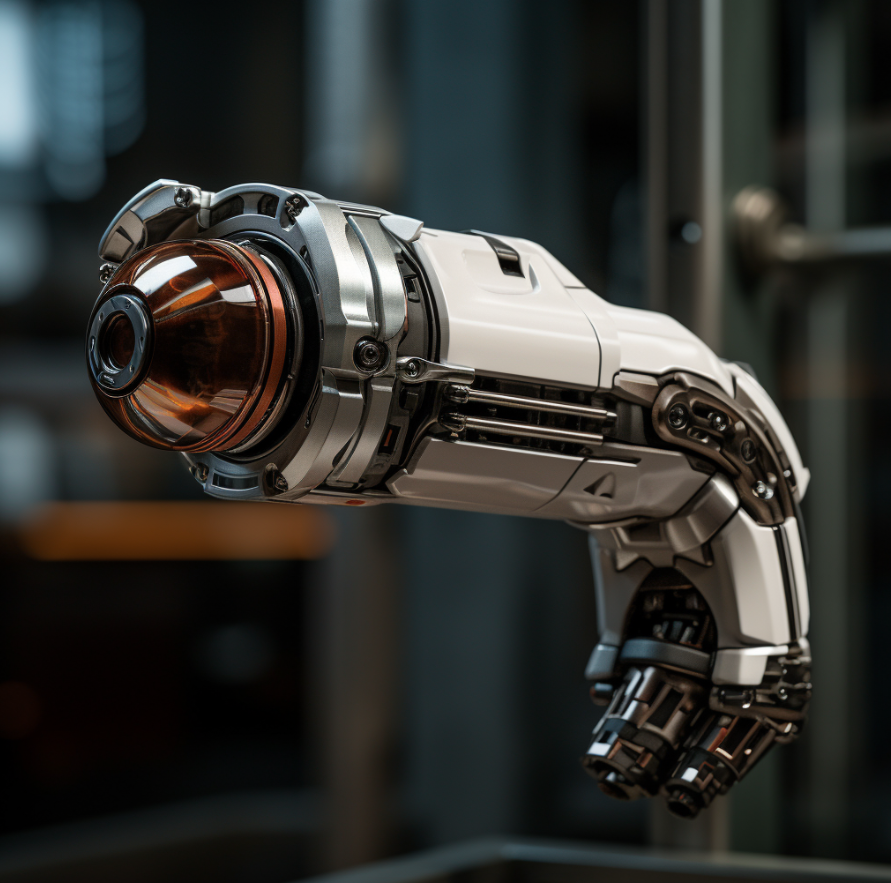

A robot jaw, also known as a robotic gripper, is an end-effector attached to a robotic arm that grasps and manipulates objects.
Robot jaws typically have two or three articulated fingers that can open, close, and rotate. Those nifty digits are then powered by actuators that provide the force and movement to grab items.
Robot jaws allow robots to pick up, move and place a variety of objects. They give robots a sense of dexterity and the ability to interact physically with their environment.
It’s no surprise, then, that robot jaws are commonplace for tasks like material handling, assembly, packaging, and so much more.
Top brands for robot jaws include Robotiq, OnRobot, RoboShop and RobotUnits. Prices range from a few hundred to tens of thousands of dollars (and more!) depending on features.
Not all robot jaws are made equal, and there are several things you should keep in mind before you get ready to buy one.
They are:
Integrating a robot jaw into your robot arm system will allow it to grasp and manipulate objects, opening up many new applications.
But, here are a few things to keep in mind to make sure you set it up properly because in some cases it’s not as easy as plugging in a new set of headphones.
First, you’ll need to provide power to the gripper. Many grippers run on 24V DC power, but you may need an additional power supply for your robot arm or a separate one for the gripper.
Second, the gripper will need to physically attach to your robot arm's end-effector flange or tool changer, if it has one. Double-check that the bolt patterns and dimensions are compatible – the most common sizes being the M4 and M8 bolts in a square or radial pattern.
Finally, you’ll need to integrate gripper control into your robot control software. Many (dare we say, most) robot arms and grippers use digital I/O over Ethernet/IP, Profinet, or other industrial Ethernet protocols to send open/close commands and receive gripper status feedback.
Please, remember to check if your robot's software has built-in support for the gripper you choose. If not, the gripper supplier should provide an API or library to help you add support, if they’re cool like that.

There are quite a few high-quality robot jaws out there, but very few are worthy of the top spot on this list.
They are:
Most robot jaws connect to and are powered by your robot arm. They typically come with cables that plug directly into ports on the arm. As for controlling the jaw, many manufacturers offer software libraries that integrate with popular robot operating systems like Robot Operating System (ROS) or Robotics System Toolbox in Matlab.
Robot jaw-lifting capacities can range from a few grams to hundreds of kilograms, depending on the size and design. What you want is to choose a jaw rated for the weight of the items you need to grasp and lift. The jaw spec sheet will list its maximum grasping force and payload capacity. Also, keep in mind the total weight with your robot arm—you don’t want the combined weight to exceed your arm’s payload!
The most common types are 2-finger parallel jaws, 3-finger jaws for irregularly shaped objects, and jaw kits with multiple jaw sets for different needs. Robot jaws come in both rigid and soft, compliant materials. Rigid jaws made of aluminum or steel have high precision but can damage fragile objects. Soft, compliant jaws made of silicone or polyurethane conform to object shapes and are best for fragile items.
Robot jaw prices range from a few hundred to hundreds of thousands of dollars, depending on features and capabilities. Basic two-finger parallel jaws start around $500-$1,000, while more complex soft jaws or jaw kits with multiple sets can cost $2,000-$5,000 or more. While robot jaws do represent an investment, they can significantly expand the capabilities and productivity of your robot system.
A high-quality robot jaw will not just augment your chosen robot arm; it will provide it with the capabilities to lift, manipulate, and correctly place objects on an assembly line or warehouse.
Basically, a robot arm without a jaw, or gripper, is not worth much, so you want to carefully consider investing in a cutting-edge robot jaw to make sure you’ve got a well-equipped tool for bringing the benefits of automation to your business.
If you’re looking to find the perfect pairing of robot arm and robot jaw for virtually any task out there, RO1 by Standard Bots is compatible with a huge variety of robot jaws. with universal M8 connectors, and integration with OnRobot end-effectors. It’s the best choice for shop floors of any size.
Talk to our solutions team right now to set up a free, 30-day onsite trial and get expert advice on everything you need to deploy your first robot.